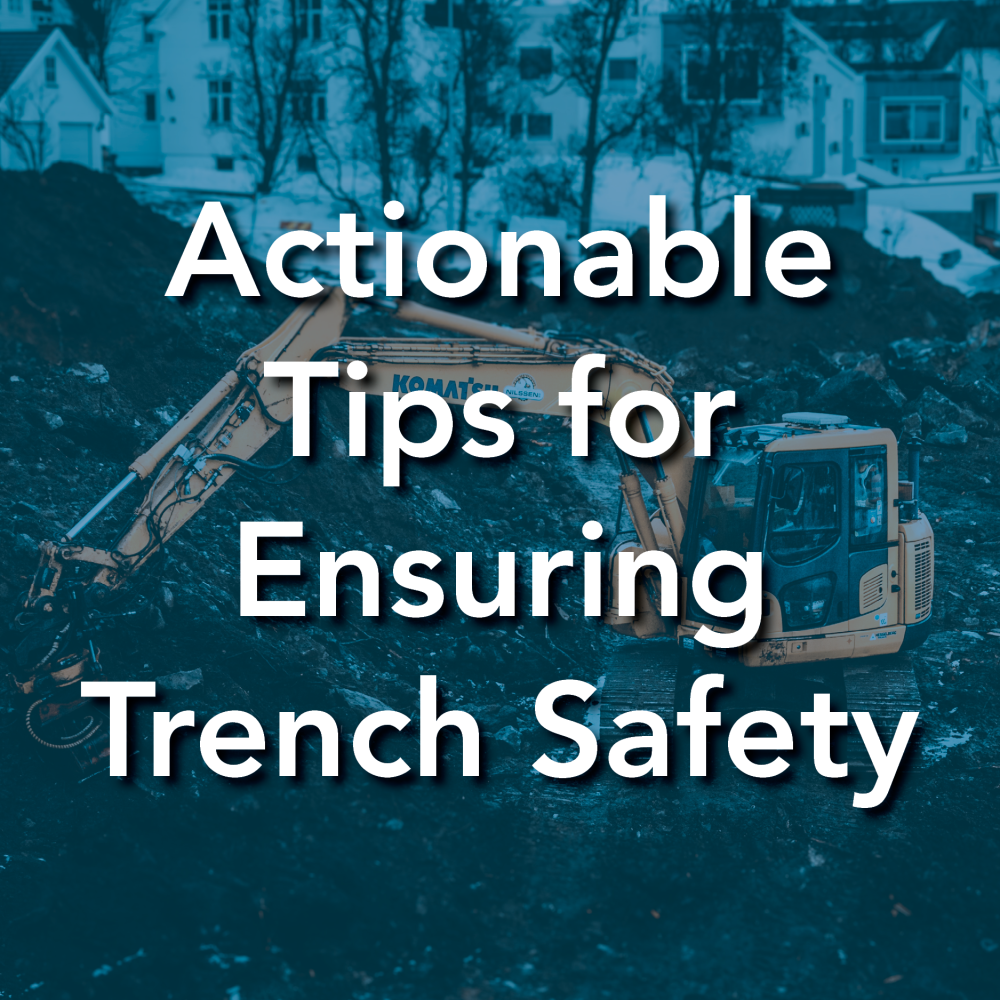
June has been declared National Trench Safety Month by the National Utility Contractors Association. For Minnesota's construction professionals working literally in the trenches, safety must be a priority due to the unique challenges posed by the state's soil conditions and climate.
Within this post, we will explore actionable tips specific to Minnesota for construction pros to create a safe working environment when dealing with trenches.
1.) Understand Minnesota's Soil Conditions
Minnesota's diverse geography presents varying soil types, including clay, sand, and loam. Familiarizing oneself with the specific soil conditions found on your jobsite will help your crew assess the stability and potential risks associated with trench work. Consult soil engineers or geotechnical experts for guidance on shoring and shielding techniques appropriate for the soil composition. Minnesota's Geospatial Information Office offers information about county-level and statewide digital data sets describing the soils of Minnesota.
provides information about county-level and statewide digital data sets that describe the soils of Minnesota. Status information and links to detailed descriptions of the characteristics and limitations of the data sets are provided.
2.) Account for Extreme Weather Conditions
Minnesota experiences harsh winters and heavy rainfall, which can impact trench safety. Plan trench work to avoid freezing temperatures whenever possible. During the rainy season, implement proper drainage systems to prevent water accumulation. Monitor weather forecasts regularly and take necessary precautions to maintain a safe working environment.
3.) Comply with Minnesota OSHA Regulations
Familiarize yourself and your crew with the Occupational Safety and Health Administration (OSHA) regulations specific to Minnesota. Ensure that your site adheres to the state's excavation and trenching standards, including proper slope angles, benching, and shoring requirements. Stay updated on any changes in regulations and incorporate them into your trench safety protocols.
4.) Engage in Ongoing Training and Certification
Encourage your workforce to undergo training programs that address trench safety. Organizations like the Minnesota Safety Council offer specialized courses on excavation and trenching safety. Encourage workers to obtain certifications such as Competent Person Training to enhance their knowledge and expertise in trench safety practices.
5.) Collaborate with Local Utility Companies
Before starting trenching work, contact local utility companies to identify the location of underground utilities. Collaborate closely with them to ensure proper utility markings and to avoid accidental utility strikes during excavation. Remember to follow the guidelines set forth by Minnesota's "One Call" system to protect underground infrastructure.
6.) Stay Informed about Local Safety Resources
Minnesota provides various safety resources and organizations to assist construction professionals in promoting trench safety. Familiarize yourself with resources such as the Minnesota Department of Labor and Industry's Construction Codes and Licensing Division, which provides guidance on safe excavation practices.
By focusing on trench safety with a Minnesota-specific approach, construction professionals can effectively mitigate risks and ensure the well-being of their workers. Adhering to state regulations, understanding local soil conditions, and leveraging available resources will enable you to create a safe working environment. Prioritizing trench safety is crucial for project success, worker protection, and overall industry advancement in the Land of 10,000 Lakes.